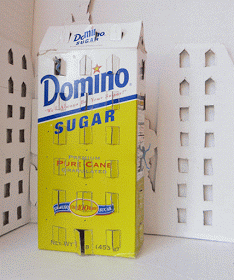Time-Based Design, Transformation, Metamorphosis and Change
We will Read/Watch:
Project Goals/Objectives:
- Learn vocab: the Elements and Principles of 4D art and design
- Understand The frame & frame-rate in video (dimensions, resolution, borders and layers)
- Keyframing Position, Opacity, Styles and Layers as keys to creating effects & illusion
- Building useable skills for creating a narrative experience, employing ideas in time, sequence, rhythm and pacing
- Organizing, naming and placing content
- Advantages and drawbacks of using Smart Objects
- Creating oversized frame content in additional documents
For this assignment, you are to tell a small story by employing images, movement and time. A primary concept to address is change. Your task is to use and show ideas in transformation or metamorphosis to relate a story. You must show 1 or more things, or ideas transforming into a new, or different thing or idea.
The transformation may be simple; examples might include simplistic ideas such as a change of seasons, and the resulting change in lifestyle, or a change in location such as a family moving out of their home to a new place… or a more complex idea might relate the story of a recent election, a person struggling with their place in society, etc. The transformation might be more conceptual or even surreal, suggesting personal change, transformation of ideas, emotions or perspectives over time.
It is up to you to decide what the concept of transformation means. Consider what is the catalyst for the transformation, and is the transformation a positive or negative thing. You may transform from A to B, or you may transform from A to B and back to A. Or, you may transform from A to B to C, or any such combination. Some ideas to consider:
- Cause – Effect – Result relationships
- Before/After
- Long-term time change, over the course of many centuries or millenia
- Physical metamorphoses, or the visualization of a psychological change
Whatever direction you choose, you must show content that transforms, perhaps in both the foreground and background. Foreground and backgrounds might change at different rates, in different ways and for different reasons.
These are the changes, transformations and alterations that Photoshop keyframe animation is capable of:
- Position
- Opacity
- Styles (changes and movement of coloration and effects generated in Layer Styles)
- Transformation (Scale, Rotation, limited to Smart Objects)
- Text Warping
PROCEDURE
- Develop an idea: Something must change or transform, and a story is revealed (or a story is what drives the change). You may use drawing, appropriate images, and/or your camera. No illustrations or animated characters that are not your own original creations.
- Sketch out your storyboard using this worksheet. You will hand this in for credit. Consider and diagram what changes, and how things change over time. Make notes on how things move or the type of path they might follow. Your final length must be no less than 15 seconds, and no more than 30 seconds.
- Your workspace must be: 1280 px. x 720 px. @ 72 ppi
- Develop an Inventory of graphic needs and specific dimensions of these items. Begin to gather, photograph, or sketch the images needed.
- Create your first animation in Photoshop following this FRAME ANIMATION handout. (you will turn in a .PSD file and .GIF file)
- Create your second animation in Photoshop following this VIDEO TIMELINE handout. (you will turn in a .PSD file and .MOV file)
- Your final delivery of files must include both the working .psd file as well as a Quicktime clip.
GRADING
Storyboard worksheets (2 points) – Do they thoroughly discuss the entire animation? Is there evidence of significant time investment? – submit hard-copy sheets at start of class
In-progress critique (2 points each) – have you completed at least five seconds of the animation? Have you completed a thorough peer review sheet? – submit file on Canvas/hard-copy crit sheets in class activity
Finished animation files (20 points) – submit on canvas (.PSD & .GIF for frame animation, and .PSD & .MOV for video timeline work)
Reflection (8 points) – on Canvas
EXAMPLES:
Caitlin Burns
A. L. Crego
http://what-the-h-el.tumblr.com/
Lorna Mills
RRRRRRRRolling gif maker
http://dvdp.tumblr.com/archive
Bryon Rogers
Amy Tavern’s Pinterest Board
James Kerr/Scorpion Dagger
Matthias Brown/MuseumGIF
Greta Larkins/FlashGIF
Zach Dougherty
Further Reading Available:
Four steps great motion designers should follow.
https://www.instagram.com/themovingposters
